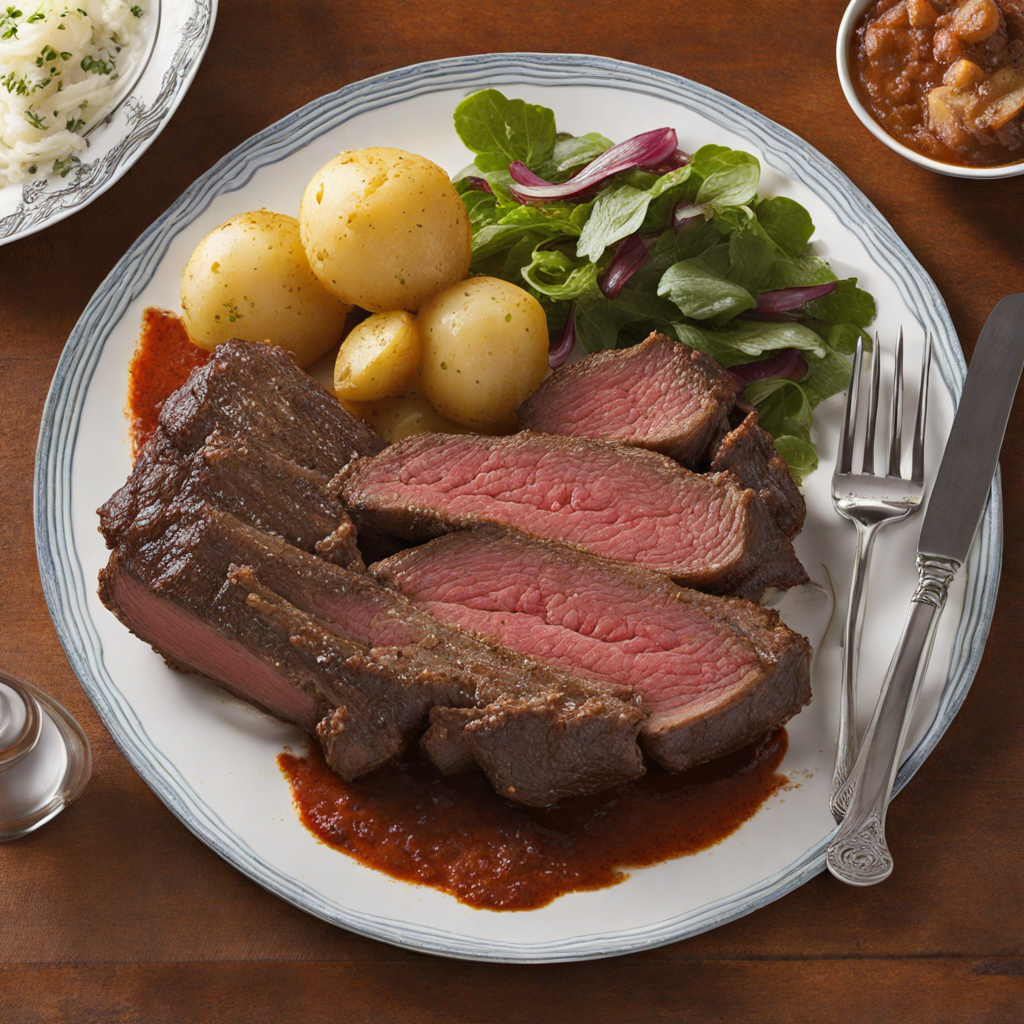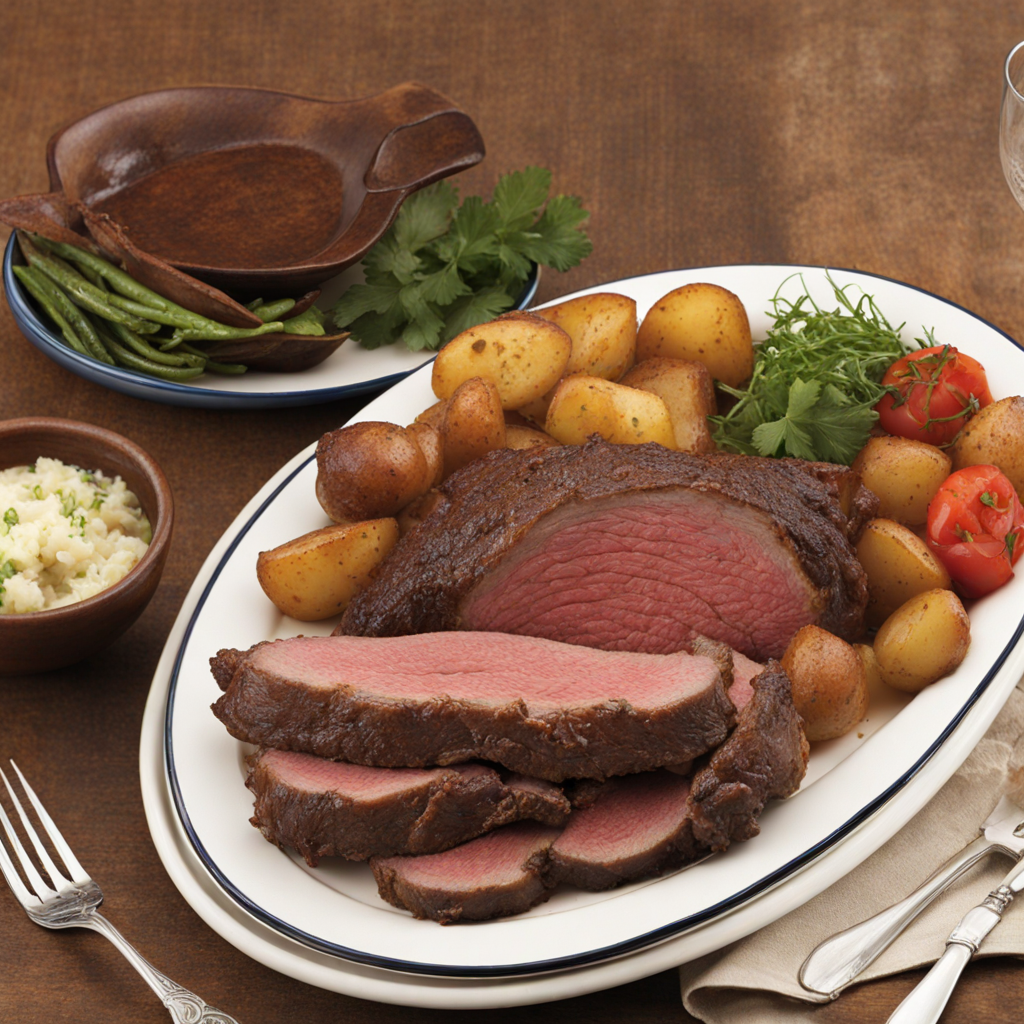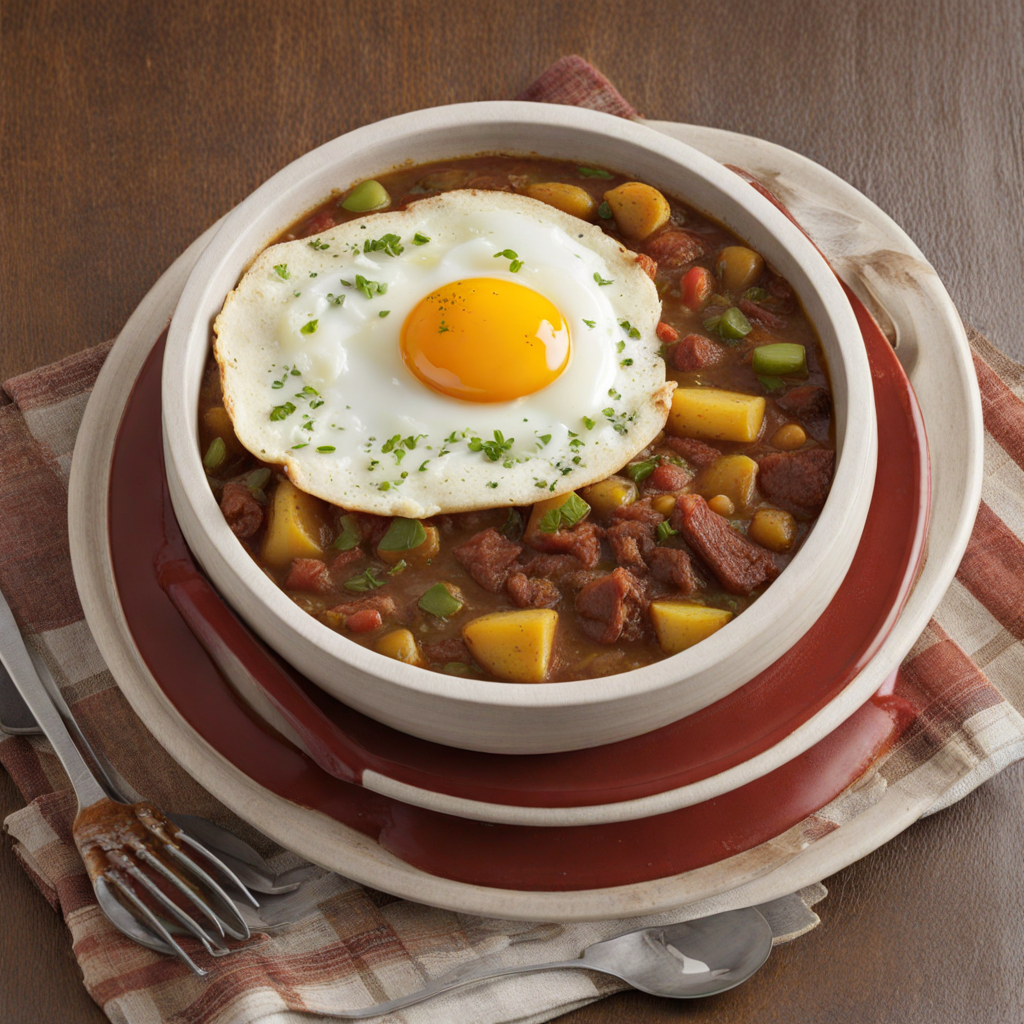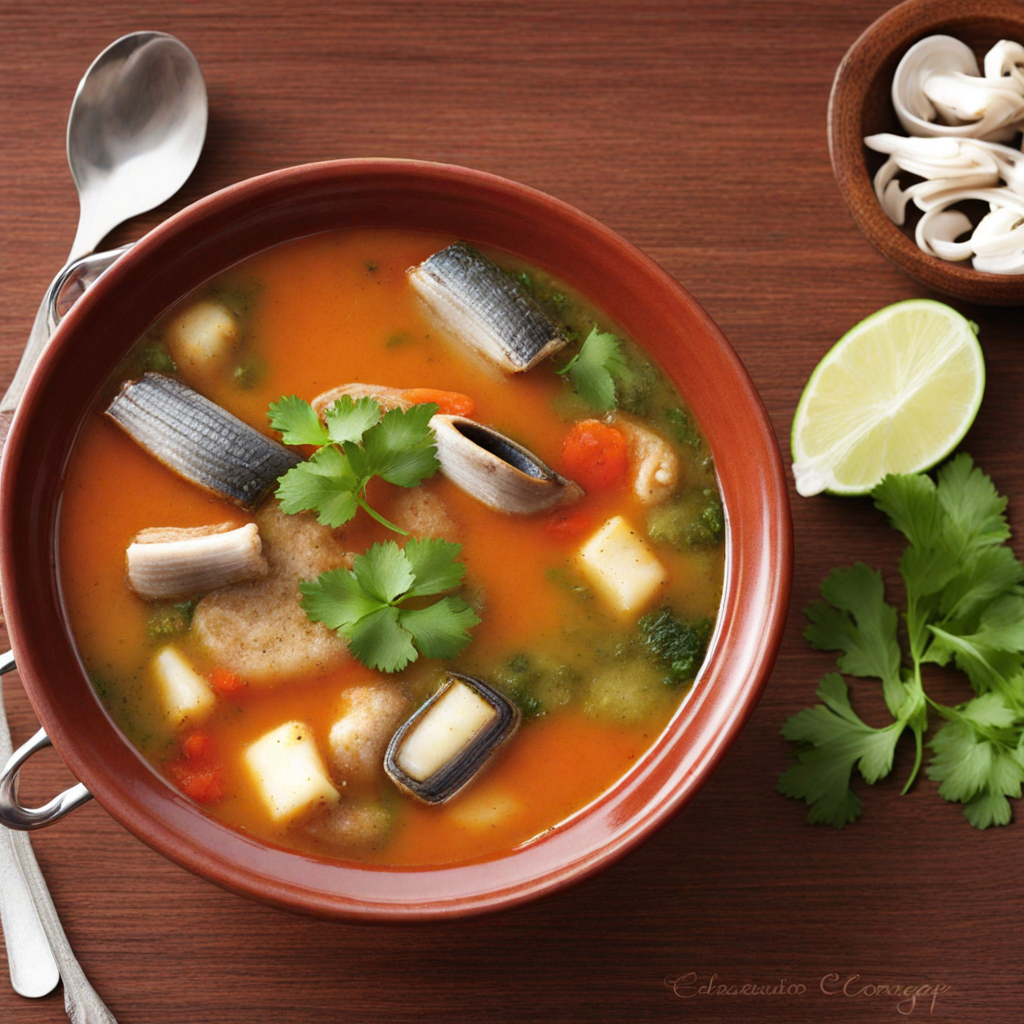Plateada
Plateada is a traditional Chilean dish that showcases the rich flavors and culinary heritage of the country. This hearty meal features a cut of beef, usually from the brisket, which is slow-cooked to perfection, allowing the meat to become incredibly tender and juicy. The cooking process often involves braising the meat with a variety of spices and aromatics such as garlic, onion, and cumin, creating a depth of flavor that is both comforting and satisfying. The slow cooking method ensures that the flavors meld beautifully, resulting in a dish that is bursting with taste and a delightful aroma that fills the kitchen. The presentation of Plateada is equally inviting, often served with a side of traditional sides such as mashed potatoes or a fresh salad, enhancing the overall experience. The dish is usually accompanied by a rich sauce made from the braising liquid, which can be drizzled over the meat to add an extra layer of flavor. Each bite offers a perfect balance of savory, slightly sweet, and earthy notes, making it a dish that is not only filling but also incredibly delicious. The tender texture of the beef, combined with the warm spices, creates a flavor profile that is distinctly Chilean, reflecting the country's diverse agricultural landscape. For those eager to explore new tastes, Plateada presents an opportunity to indulge in a comforting, home-cooked meal that embodies the essence of Chilean cuisine. The communal aspect of the dish, often enjoyed during family gatherings or special occasions, makes it a perfect choice for sharing with loved ones. With its rich flavors and inviting aroma, Plateada is a dish that promises to transport you to the heart of Chile, offering a unique culinary experience that is both memorable and delicious.
How It Became This Dish
Plateada: A Culinary Tradition of Chile Origins and Traditional Roots Plateada, a beloved cut of beef, holds a significant place in the culinary landscape of Chile. Its origin as a dish dates back to the early colonial period when Spanish settlers introduced cattle to the region. The word "plateada" itself refers to a specific cut of meat that comes from the brisket area of the cow. This cut is rich in flavor due to its marbled fat content, making it an ideal choice for slow cooking methods prevalent in early Chilean kitchens. In the 16th century, as the Spanish colonizers settled in Chile, they brought with them various culinary traditions, blending them with the indigenous Mapuche culture. The indigenous people had a profound influence on agriculture and livestock management, adapting their practices to the local environment. The introduction of beef into the Mapuche diet marked the beginning of a fusion that would define Chilean cuisine. In this context, plateada emerged as a practical and hearty meal for families, especially in rural areas, where it became a staple for gatherings and celebrations. Cultural Significance Plateada transcends mere sustenance; it embodies the spirit of Chilean hospitality and tradition. In Chile, food is often at the center of social interaction, and meals serve as a way to bring families and communities together. Plateada is typically prepared for family gatherings, holidays, and special occasions, reflecting the importance of communal dining in Chilean culture. The preparation of plateada is often a communal affair. Traditionally, families would gather to prepare the meal, sometimes even involving multiple generations. This not only reinforced family bonds but also ensured the passing down of culinary techniques and recipes from one generation to the next. The dish is often accompanied by traditional sides, such as potatoes, rice, or a fresh salad, adding to the communal experience of dining. Plateada also finds its place in Chilean folklore and storytelling. The act of cooking plateada is often accompanied by anecdotes and tales shared around the kitchen table, blending the act of eating with the transmission of cultural knowledge. This connection between food and storytelling is a vital part of Chile's cultural heritage, where every dish has a story, and every meal is an opportunity to connect with the past. Development Over Time As Chilean society evolved, so did the preparation and presentation of plateada. In the early 20th century, with the rise of urbanization and changes in lifestyle, the way Chileans approached their food began to shift. Traditional recipes remained, but they started to incorporate modern techniques and influences from international cuisines. During this time, plateada became more than just a family dish; it started to gain recognition in restaurants and culinary establishments. Chefs began to experiment with new cooking methods, including sous-vide and braising techniques, enhancing the tenderness and flavor of the meat. This evolution in preparation methods allowed for greater creativity and sophistication in the presentation of the dish, appealing to a wider audience. The globalization of food in the late 20th and early 21st centuries also impacted the way plateada was perceived. As Chilean cuisine began to gain international recognition, chefs and food enthusiasts started to explore the unique flavors and techniques of traditional dishes. Plateada was featured in culinary festivals and international events, showcasing not only its rich flavor but also its cultural significance. In contemporary Chile, plateada continues to be a popular dish, adapted to modern tastes while still honoring its traditional roots. It is often found on the menus of traditional restaurants and modern bistros alike, where chefs take pride in sourcing high-quality, local ingredients. The dish has also seen a resurgence in home cooking, as more Chileans seek to reconnect with their culinary heritage amidst a fast-paced world. Modern Interpretations Today, plateada is often prepared in various ways, depending on the chef or family recipe. Some may choose to braise the meat in a rich sauce made from red wine, onions, and spices, while others might opt for a simpler preparation, allowing the natural flavors of the beef to shine through. Accompaniments have also evolved, with options ranging from traditional pebre (a Chilean condiment made with cilantro, garlic, and chili) to modern twists involving exotic vegetables and grains. The rise of food tourism in Chile has further popularized plateada, with travelers seeking authentic culinary experiences. Cooking classes and food tours often include plateada as a highlight, allowing visitors to learn about its preparation while enjoying the communal aspect of Chilean dining. This not only helps to preserve the dish's traditions but also introduces it to new audiences, fostering a greater appreciation for Chilean cuisine. Plateada's versatility has also led to its inclusion in fusion dishes, where chefs incorporate elements from other cuisines. For instance, it might be served in tacos, alongside Asian-inspired sauces, or even incorporated into gourmet sandwiches. These adaptations reflect the dynamic nature of Chilean cuisine and its ability to embrace change while maintaining a strong connection to its roots. Conclusion Plateada is more than just a dish; it is a symbol of Chilean culture, history, and community. Its journey from a humble cut of meat to a celebrated culinary centerpiece illustrates the resilience and adaptability of Chilean traditions. As it continues to evolve, plateada remains a cherished part of Chilean identity, a testament to the deep connections that food fosters among families and communities. In a world that often feels increasingly disconnected, the act of gathering around a plate of plateada serves as a reminder of the importance of tradition, storytelling, and shared experiences. Whether enjoyed in a rustic home kitchen or a bustling restaurant, plateada stands as a delicious embodiment of Chile's rich culinary heritage, inviting all to partake in its history and savor its flavors.
You may like
Discover local flavors from Chile







